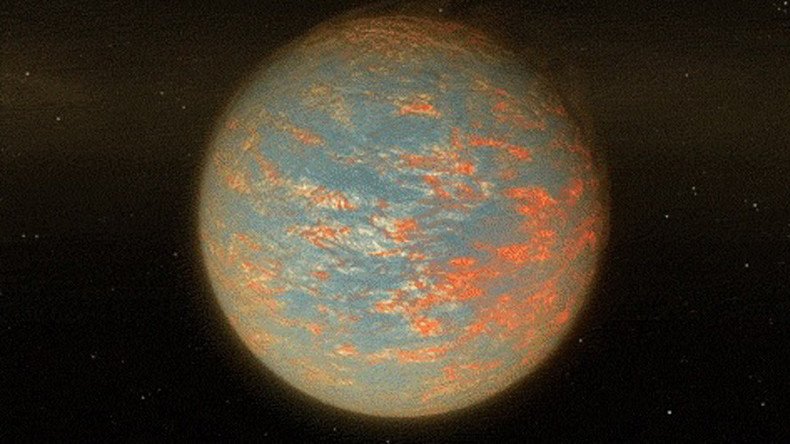First ‘heat map’ of volatile super-Earth planet points to lava flows (PHOTO, VIDEO)

Data from NASA’s Spitzer Space Telescope has led scientists to create the first temperature map of a ‘super-Earth’ planet nearly twice the size of ours.
The map revealed extreme temperature swings from one side of the planet to the other, suggesting the presence of lava.

"The latest findings tell us the planet has hot nights and significantly hotter days,” said University of Cambridge astrophysicist Brice-Oliver Demory, who has been studying the data.
“This indicates the planet inefficiently transports heat around the planet. We propose this could be explained by an atmosphere that would exist only on the day side of the planet, or by lava flows at the planet surface."
Named 55 Cancri e, the super planet is “relatively close” to Earth, according to NASA, at a mere 40 light-years away.
55 Cancri e is locked to its star by gravity just as we are to the moon. The super-planet’s very close proximity to the star can be seen in NASA’s animated illustration.
As 55 Cancri e circles its star every 18 hours, and because of their close proximity, one side of the planet is always under extreme heat (referred to as “the day side”), while “the night side” remains dark and cool.
"The day side could possibly have rivers of lava and big pools of extremely hot magma, but we think the night side would have solidified lava flows like those found in Hawaii," said Michael Gillon of the Astrophysics Department at the University of Liège, Belgium.
READ MORE: Colliding galaxies form stunning 'cosmic kaleidoscope' in ESA image (PHOTO)
To collect the heat map data, Spitzer monitored orbiting 55 Cancri e for a total of 80 hours, allowing scientists to grasp the full extent of the planet’s complicated temperature changes.
For example, Spitzer found that the temperature on each side of the planet jumps and dips by a massive 1,282.2 degrees Celsius (+2,340 Fahrenheit), with the ‘day side’ reaching 2,426.6 degrees Celsius (+4,400 Fahrenheit) and the ‘night side’ a relatively cool 1,126.6 degrees Celsius (+2,060 Fahrenheit).












